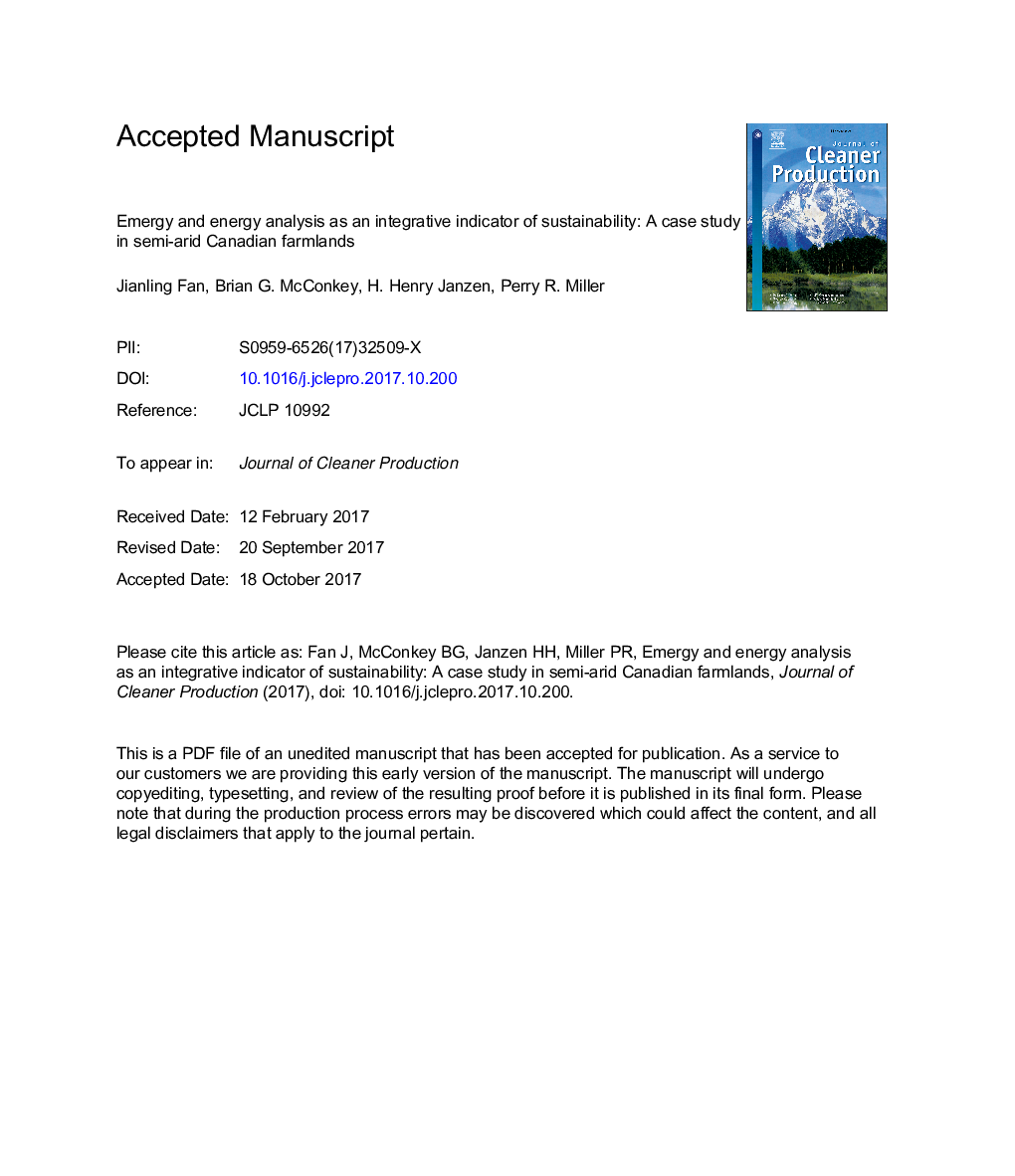| کد مقاله | کد نشریه | سال انتشار | مقاله انگلیسی | نسخه تمام متن |
|---|---|---|---|---|
| 8099887 | 1522081 | 2018 | 42 صفحه PDF | دانلود رایگان |
عنوان انگلیسی مقاله ISI
Emergy and energy analysis as an integrative indicator of sustainability: A case study in semi-arid Canadian farmlands
ترجمه فارسی عنوان
تجزیه و تحلیل انرژی و انرژی به عنوان شاخصی جامع از پایداری: یک مطالعه موردی در مناطق نیمه خشک ارقام کانادا
دانلود مقاله + سفارش ترجمه
دانلود مقاله ISI انگلیسی
رایگان برای ایرانیان
کلمات کلیدی
سیستم برداشت، محصول پالس، ماده آلی خاک، تجزیه و تحلیل ایمنی، تجزیه و تحلیل انرژی، پراید کانادا،
موضوعات مرتبط
مهندسی و علوم پایه
مهندسی انرژی
انرژی های تجدید پذیر، توسعه پایدار و محیط زیست
چکیده انگلیسی
Agricultural is essential to feed the human world but it can also degrade the physical world. Therefore, we need widely-accepted metrics to assess how prospective practices influence sustainability. We hypothesized that emergy and energy analyses considered together provide a robust, comprehensive measure of sustainability, and evaluated this hypothesis using findings from two field studies in the semiarid prairie region of Canada: a systems experiment including nine different 3-yr cropping rotation systems and a stubble experiment involving five preceding crop stubbles treatments with three nitrogen (N) addition levels. The grain yield emergy transformities of rotation systems with pulses, ranging from 0.68 to 0.83 E+05 sej Jâ1, were 32% lower (P < 0.05) than rotations without pulses. Significantly lower grain transformity of durum wheat grown on pulse stubbles than grown on durum wheat stubble were observed for both the systems and stubble experiments, suggested a higher crop production efficiency conferred by previous pulse crops. The emergy sustainability index (ESI) of Fallow-Durum wheat-Pea (F-D-P) rotation (1.94) was 1.3-2.2 times that of other rotations, while the continuous rotations increased ESI from 1.00-1.11 to ESIÎQ of 2.00-2.21 by considering the storage increase (ÎQ) of the system, i.e. soil organic carbon (SOC). The grain yield/energy input ratio (G/I) and energy output/energy input ratio (O/I) for F-D-P rotation (775 g MJâ1 and 12.9, respectively) were significantly (P < 0.05) higher than those of all other rotations for its low energy input, which was obtained at the cost of huge SOC decrease. Modified energy use efficiency indices, G/IÎSOC and O/IÎSOC, were proposed in the present study to include the effect of SOC change (ÎSOC) in energy use efficiency by regarding ÎSOC as energy input where the system depleted SOC and as energy output where SOC accumulated. The G/IÎSOC and O/IÎSOC ratios for continuous rotations were significantly (P < 0.05) higher than those of other rotations, indicating higher energy use efficiency in continuous rotation systems. Therefore, ESIÎQ and O/IÎSOC are recommended as sustainability indicators in emergy and energy analysis respectively, and we recommend that emergy and energy analysis should be done and considered together to have a more informative assessment of relative sustainability and efficiency of cropping systems.
ناشر
Database: Elsevier - ScienceDirect (ساینس دایرکت)
Journal: Journal of Cleaner Production - Volume 172, 20 January 2018, Pages 428-437
Journal: Journal of Cleaner Production - Volume 172, 20 January 2018, Pages 428-437
نویسندگان
Jianling Fan, Brian G. McConkey, H. Henry Janzen, Perry R. Miller,
